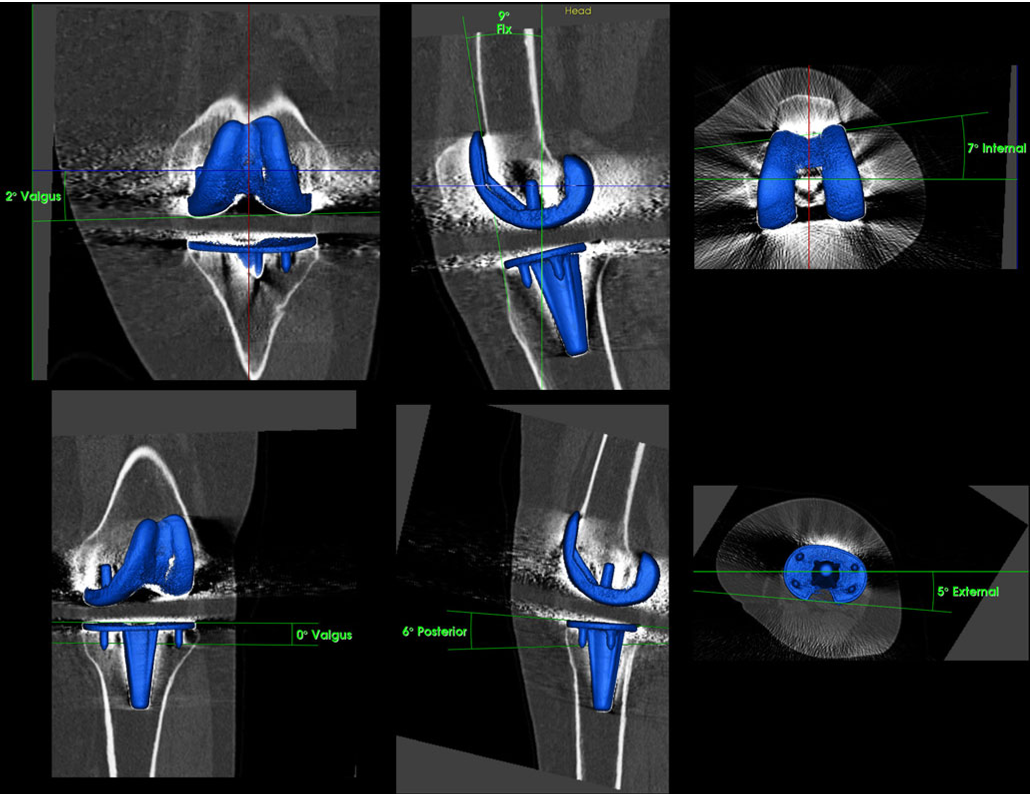




Did you find this useful? Give us your feedback

![Table 3 Intra- und inter-observer reliability (ICCs for absolute single-photon emission computed tomography [SPECT] values, relative SPECT values) of 3D voxel-based SPECT uptake measurement](/figures/table-3-intra-und-inter-observer-reliability-iccs-for-38xjzusw.png)



![Fig. 3 The previously validated SPECT/CT scheme used for localisation of the Tc-99m HDP tracer activity in patients with painful knees after primary total knee arthroplasty. F femur, T tibia, P patella, 1 medial, 2 lateral, 3 central around stem, a anterior, p posterior, i inferior, s superior, shaft, tip and tubercle. Reprinted with permission. Publication can be found at www.springerlink.com [11]](/figures/fig-3-the-previously-validated-spect-ct-scheme-used-for-3jq18chk.png)





74 citations
...A novel four-dimensional SPECT/CT approach correlates tracer uptake and joint replacement component positioning in patients after total knee arthroplasty, showing excellent inter- and intraobserver reliabilities, and might therefore be the evaluation standard of the future [42, 43]....
[...]
57 citations
...The coronal (varus–valgus) alignment was determined with reference to the mechanical axis, according to different anatomical landmarks which have been previously proven to be available and reliable [34]....
[...]
51 citations
...They reported near perfect inter- and intra-observer reliability for their proposed standardized SPECT/CT algorithm including a localization scheme, intensity value and 3-D prosthetic component analysis [3, 6]....
[...]
...In previous studies this measurement method was shown to be highly accurate [2, 3, 23, 24]....
[...]
...highlighted the clinical value of a standardized diagnostic algorithm including SPECT/CT in patients with problems after TKA [3]....
[...]
...85, which is considered to be a near perfect reliability [3]....
[...]
...3 Measurement of femoral and tibial TKA component positions (varus-valgus, flexion-extension, internal rotation-external rotation) in 3-D reconstructed CT images using a customized software [3]...
[...]
46 citations
...The sagittal (flexion–extension), coronal (varus–valgus) and rotational alignment (internal rotation–external rotation) were determined with reference to the mechanical axis, according to different anatomic landmarks which have been previously proven to be available and reliable [24]....
[...]
...75-mm slices of the knee and 3-mm slices of the hip and ankle joints [24]....
[...]
41 citations
...Konigsberg et al. found a poor interobserver ICC for the femoral component of 0.386 and a good intraobserver ICC of 0.606 [23] measured with 2D-CT....
[...]
...Hirschmann et al. [18] reported a very good intraobserver (ICC of 0.93) and interobserver reliability (ICC 0.88)....
[...]
...The overall measurements for intraobserver and interobserver reliability were good (ICC 0.809 and ICC 0.67) according to Konigsberg et al. [23] for 2D-CT measurements....
[...]
...Four studies reported levels of accuracy using intraclass correlation coefficients (ICC) [18, 19, 23, 29]....
[...]
...Hirschmann et al. [18, 19] reported a very good intraobserver reliability (ICC of 0.97 and 0.99) and interobserver reliability (ICC 0.95 and 0.99) in two studies....
[...]
36 citations
34 citations
31 citations
22 citations
Its clinical value will be further investigated in prospective clinical studies.